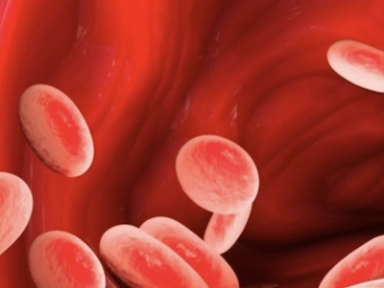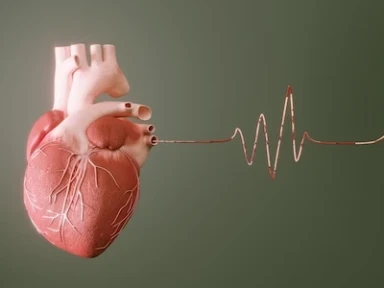What do us physicians and patients think about LLTs and goals of treatment?
Physician and patient perceptions of benefits, risks, and treatment goals of lipid-lowering therapy: Results from GOULD registry.
Key Takeaway
The structured questionnaires in a large US cohort with cardiovascular disease and treating physicians, revealed substantial gaps in patients’ knowledge and understanding of the disease and treatments, which may result in poorer adherence to medications and healthy lifestyle choices.
- Most patients had knowledge gaps in understanding the risk of cardiovascular disease and recurrent cardiovascular events, cholesterol levels/goals, and the benefit of cholesterol medications.
- Most physicians believed that non-adherence was primarily attributed to the lack of understanding of the importance and efficacy of statins.
Why this matters
- Patients' understanding and perceptions of the benefits, risks, and treatment goals of LLT and physicians’ understanding on how best to manage LLT in patients with ASCVD are not well known.
- The questionnaires were implemented among patients with ASCVD and suboptimal LDL-C control or on a PCSK9 inhibitor, as well as physicians to provide the required insights.
Study Design
Gould, a US-based registry describing longitudinal cholesterol treatment patterns among patients with ASCVD, enrolled patients from 119 sites*
- Patients were contacted by telephone for a structured interview at enrollment, and enrolling physicians completed a written questionnaire
Eligible patients
- Clinically relevant ASCVD (coronary artery disease, prior myocardial infarction, coronary/other arterial revascularization, ischemic stroke/ transient ischemic attack, peripheral artery disease, and carotid artery stenosis)
- LDL-C ≥70 mg/dL or on PCSK9 inhibitor at enrollment
Questionnaire modules
- Patients: Demographics and risk factor assessment, usual source of care/access to care, LLT use and statin adherence; side effects; rechallenge, PCSK9 inhibitors, and ASCVD risk awareness
- Physicians: Lipid measurement, statin use, use of nonstatin LLTs, PCSK9 inhibitors, familial hypercholesterolemia, and patient education
Key Results
Structured questionnaires were conducted in US outpatients (N = 5,006; response rate: 93.4%) and in physicians (N = 113; response rate: 100%).
- Patient-demographics: Mean age: 67.8 ± SD 9.9 years; men: 60.3% and white race: 86.1%
- Physician-specifications: Mean age: 56.1 ± SD 9.9 years; average practice: 23.0 ± SD 11.0 years; cardiologists: 45.1%; primary care: 45.1%; other specialties: 9.8%
|
Patient perceptions |
Results from patient-questionnaire (% patients) | |
| Heart disease as leading cause of death | 62.9% in men | 46.3% in women |
| Unable to estimate risk of having a heart attack/ stroke in next 10 years | 54.7% | |
| Lower risk of heart attack/stroke as main reason to take llt | 27.8%, | |
| Statin-side-effect experienced | 35.5% (mostly muscle related) |
|
Patients in the PCSK9 inhibitor cohort (vs LDL-C cohort), men (vs women), and younger patients (vs those aged ≥65 years) were generally more knowledgeable about their disease and its management
| Physician perceptions | Results from physician-questionnaire (% physicians) |
| Evidence for high-intensity statins in patients with ascvd as strong/very strong | 78.1 % |
| LDL-c goals | <70 mg/dL: 73.3% No LDL-C goals: 6.3% Depend on patient’s risk factors: 8.9% |
| Reasons cited for non-adherence to statins | Patient-belief that the medication did not work (66.4%), vs cost (8.8%) or side effects (0.9%) |
| Side-effects experienced | 19.5% ± SD 13.2% (% patients on statins) |
Patient education on importance of the medication in reducing cardiovascular events was the most commonly used strategy by physicians to make their patients tolerate statins.
Limitations
- Patients were less diverse*.
- The knowledge gaps which would be most important to target to improve adherence to LLT and healthy lifestyle choices were unclear.
- The results were based on questionnaires administered at patient enrollment† and did not consider updated lipid guidelines.
- Other clinical factors which may impact patient’s individual risk of heart attack/stroke and risk reduction with cholesterol-lowering medications could not be accounted.
- Questionnaire results were limited by small number and selected nature of participating physicians.
*In age, race, and socioeconomic status.
†Between December 2016–July 2018.
ASCVD, Atherosclerotic Cardiovascular Disease; GOULD, Getting to an Improved Understanding of Low-Density Lipoprotein Cholesterol and Dyslipidemia Management; LDL-C, Low-Density Lipoprotein Cholesterol; LLT, Lipid Lowering Therapy;PCSK9, Proprotein Convertase Subtilisin/Kexin type 9; SD, Standard Deviation.
- Arnold SV, Cannon CP, de Lemos JA, Rosenson RS, Ballantyne CM, Liu Y, et al. What do US physicians and patients think about lipid-lowering therapy and goals of treatment? Results from the GOULD registry. J Am Heart Assoc. 2021;10(16):e020893. doi: 10.1161/JAHA.120.020893. PMID: 34369165.




.webp/jcr:content/jcr_content%20(9).webp)